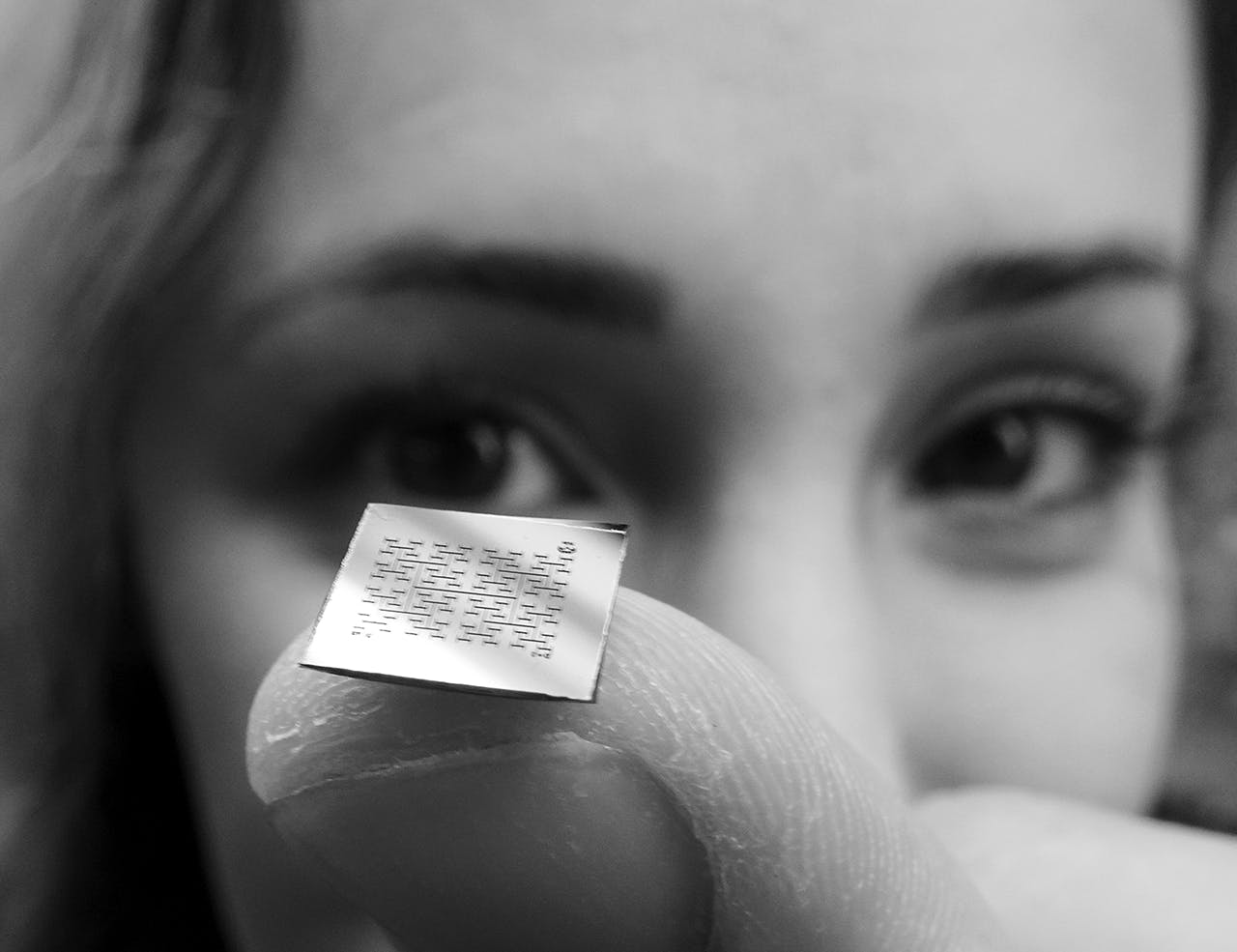RIVER TRIBUTARIES. TREES BRANCHING. Blood vessels. Neurons. Each of these organic systems demonstrates a natural mathematically branching pattern called fractals. Now Richard Taylor, an interdisciplinary scientist at the University of Oregon, is using fractal patterning to design a new generation of implants that could restore vision for millions of people affected by retinal degenerative diseases.
Taylor, 54, is a physicist who also has a master’s in art theory. He uses computational analysis to study the fractal nature of paintings by Jackson Pollock, to differentiate them from the estimated 400 fakes in circulation. Diseases such as macular degeneration or retinitis pigmentosa attack the human retina; Taylor’s devices will replace the damaged area and interface with the brain.Electricity creeps through implant devices similarly to the way a river f lows through a landscape. The problem is that current devices are square and smooth. Neurons exhibit a fractal pattern, so when neurons in the retina encounter one of these strange, square devices, the neurons avoid them.
“People are putting electronics in the body, but they’re using a very conventional square, smooth shape for the electrode,” Taylor explained. “What we’re going to do is replace it with branched ones so the neuron will see that it’s a friendly site and will actually attach to it.”
For the past two years, Taylor’s team has gleaned satisfying data from computer simulations showing that their fractal implants should stimulate enough neurons to allow for 20/80 vision. Soon they will enter the in vivo phase using mice retinas, which are much smaller than human retinas—so success with mice is a promising step toward human trials. Taylor’s team recently received a $900,000 grant from the W. M. Keck Foundation to move the research forward, and they will be partnering with the Casey Eye Institute at Oregon Health & Science University, where surgeons are studying the technique of retinal implantation.
“We’ve got all of our equipment together, and we’ve assembled the team, and we’re ready to publish,” Taylor said. “If we can realize this technique, then we could restore vision to about a million people across North America and Europe. That’s pretty good news.”











